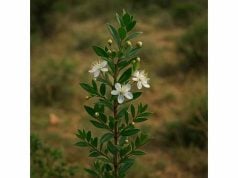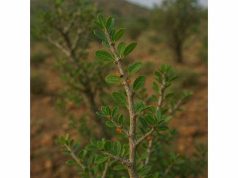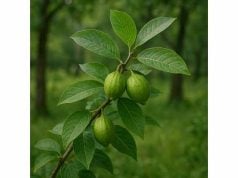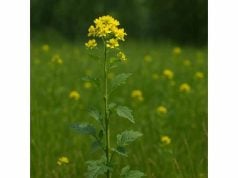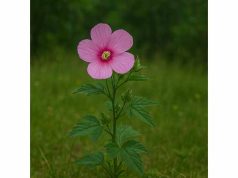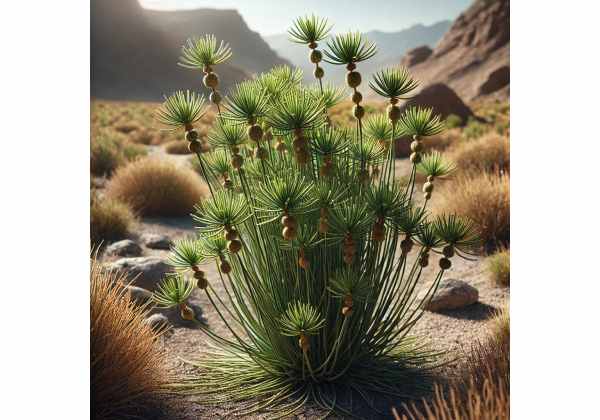
Ma Huang, also known as Ephedra sinica, is a time-honored herb celebrated in traditional medicine for its multifaceted benefits. Revered for its natural stimulant properties, it has been used to improve respiratory function, boost energy levels, and promote weight management. Its active compounds—primarily ephedrine and pseudoephedrine—are credited with unlocking these therapeutic effects. Beyond its stimulant capacity, Ma Huang offers anti-inflammatory and decongestant properties that have proven valuable in alleviating symptoms of colds and asthma. This comprehensive guide delves into its botanical characteristics, active chemical constituents, health advantages, practical applications, and the latest scientific findings.
Table of Contents
- Comprehensive Botanical Profile
- Phytochemical Insights and Active Compounds
- Health Advantages and Inherent Qualities
- Practical Applications and Safety Considerations
- Research Discoveries and Scientific Findings
- Frequently Asked Questions
Comprehensive Botanical Profile
Ma Huang, botanically known as Ephedra sinica, is a fascinating gymnosperm with a storied past and unique botanical characteristics. Classified within the division Gnetophyta, it belongs to the family Ephedraceae and is one of the few surviving representatives of an ancient lineage. This herb is characterized by its jointed, greenish stems, which have largely replaced the conventional leafy appearance seen in many plants. The reduced leaves, often appearing as small scales, perform minimal photosynthetic functions, leaving the stems to capture sunlight efficiently.
Native to arid and semi-arid regions of northern China and parts of Central Asia, Ma Huang thrives in well-drained, sandy soils and rocky terrains where water is scarce. Its adaptation to such environments is marked by a deep root system that efficiently scavenges for moisture, ensuring survival under harsh climatic conditions. The plant’s morphology is both rugged and minimalistic, with cylindrical, segmented stems that exhibit a delicate balance between resilience and flexibility. These stems can reach lengths of up to 60 centimeters, displaying a pale green to grayish hue that blends seamlessly into its desert surroundings.
Taxonomically, Ephedra sinica is intriguing because it diverges significantly from the flowering plants (angiosperms) that dominate many ecosystems. Instead, its reproductive structures are organized in cone-like formations that produce seeds, a characteristic it shares with conifers. These cones, though diminutive, are essential for the plant’s propagation and exhibit a subtle yet complex structure that has drawn the attention of botanists and herbalists alike. The reproductive cycle of Ma Huang is finely tuned to its environment, with flowering and seed dispersal occurring during optimal seasonal windows to maximize survival and genetic diversity.
Historically, Ma Huang has been integral to traditional Chinese medicine for over two millennia. Ancient texts document its use in treating respiratory ailments, stimulating energy, and alleviating symptoms associated with colds and asthma. The herb’s natural stimulant properties, derived from its active alkaloids, have made it a popular remedy for inducing perspiration and clearing nasal passages. Over time, its application extended beyond simple remedies to more complex therapeutic protocols, influencing the development of various herbal formulas.
In its natural habitat, Ma Huang plays a modest yet vital role in the local ecosystem. It provides a subtle source of nourishment and shelter to a variety of desert-adapted fauna. The plant’s resilience in nutrient-poor soils and extreme temperatures has made it a subject of ecological interest, as researchers study its potential for sustainable cultivation in similar arid environments. Its ability to flourish under conditions that would challenge many other species has also prompted investigations into its genetic adaptations, which could hold keys to future agricultural innovations in water-limited regions.
The physical structure of Ma Huang not only underpins its survival but also influences its medicinal properties. The high concentration of bioactive compounds within the stems is a direct consequence of its evolutionary adaptations to stressful environments. These compounds, including a suite of alkaloids, are believed to play a role in the plant’s defense mechanisms against herbivores and pathogens. In essence, the very features that allow Ma Huang to thrive in harsh conditions also contribute to its potent therapeutic qualities. This remarkable intersection of survival and utility underscores the enduring relevance of Ma Huang in both ecological and medicinal contexts.
Contemporary research continues to explore the genetic blueprint of Ma Huang, seeking to unravel the intricate relationships between its structural adaptations and pharmacological potency. Advances in molecular biology have enabled scientists to isolate and identify the specific genes responsible for alkaloid synthesis, paving the way for biotechnological applications. Such studies not only enhance our understanding of this ancient herb but also suggest potential avenues for cultivating Ma Huang in controlled environments, ensuring a sustainable supply for medicinal use while preserving wild populations.
In summary, the comprehensive botanical profile of Ma Huang highlights a plant that is as remarkable in its adaptability as it is in its medicinal value. Its unique evolutionary history, coupled with its specialized morphology and chemical richness, makes it a subject of enduring fascination. Whether viewed through the lens of traditional herbal medicine or modern botanical science, Ma Huang stands as a testament to nature’s ingenuity and the timeless wisdom embedded in its enduring legacy.
Phytochemical Insights and Active Compounds
Ma Huang is renowned for its complex phytochemical composition, which underpins its wide-ranging therapeutic properties. The herb is particularly celebrated for its alkaloid content, which includes several potent compounds that contribute to its stimulant and decongestant effects. Here, we explore the key active compounds found in Ma Huang and detail their individual characteristics and mechanisms of action.
- Ephedrine
Ephedrine is the most well-known alkaloid present in Ma Huang. It acts primarily as a sympathomimetic agent, stimulating the central nervous system and increasing heart rate and blood pressure. Its ability to dilate bronchial passages makes it invaluable in treating respiratory conditions such as asthma and bronchitis. Ephedrine also enhances metabolic rate, which has contributed to its use in weight management formulations. Despite its benefits, its potent stimulant properties require careful dosing and monitoring to avoid adverse cardiovascular effects. - Pseudoephedrine
Closely related to ephedrine, pseudoephedrine is another crucial compound in Ma Huang. It shares many of the decongestant properties of ephedrine but is typically considered milder in its stimulant effects. Pseudoephedrine is widely utilized in over-the-counter decongestant medications to relieve nasal congestion associated with colds and allergies. Its mechanism involves constricting blood vessels in the nasal passages, thereby reducing swelling and promoting clearer breathing. - Methylephedrine
Methylephedrine is a derivative of ephedrine that exhibits a slightly different pharmacological profile. While it contributes to the overall stimulant effect of Ma Huang, its impact on the cardiovascular system is less pronounced compared to its parent compound. This compound is often studied for its potential to provide a balanced approach to energy enhancement without overly stressing the heart, making it a subject of interest for developing safer therapeutic alternatives. - Norephedrine
Norephedrine, another alkaloid found in Ma Huang, plays a role in modulating the herb’s overall physiological impact. It contributes to the thermogenic and lipolytic (fat-burning) properties of the herb. By stimulating the sympathetic nervous system, norephedrine assists in the mobilization of energy reserves and the breakdown of fat cells. This makes it particularly attractive in formulations aimed at supporting weight loss and enhancing physical performance. - Additional Bioactive Components
In addition to these primary alkaloids, Ma Huang contains several ancillary compounds such as tannins and flavonoids. These substances, though present in smaller quantities, contribute to the herb’s overall antioxidant and anti-inflammatory effects. Flavonoids, in particular, help mitigate oxidative stress and may offer protective benefits for cardiovascular health. Tannins provide astringent properties that can be beneficial in minor wound healing and in supporting digestive health.
The synergistic action of these compounds is believed to be at the core of Ma Huang’s medicinal prowess. When combined, they create a robust biochemical matrix that influences multiple physiological pathways simultaneously. This multi-targeted approach is one of the reasons why Ma Huang has maintained its esteemed status in traditional medicine for centuries.
Modern phytochemical research has employed advanced analytical techniques such as high-performance liquid chromatography (HPLC) and mass spectrometry to isolate and quantify these active constituents. Such studies have confirmed the variability in alkaloid concentrations based on factors like geographic location, harvest time, and processing methods. This variability not only affects the potency of the herb but also underscores the importance of standardization in herbal preparations. Researchers continue to investigate optimal cultivation and extraction methods to maximize the therapeutic benefits while minimizing potential risks.
Furthermore, ongoing studies aim to elucidate the molecular interactions of these alkaloids with human receptors and enzymes. Understanding these interactions is critical for refining dosing guidelines and enhancing the efficacy of Ma Huang-based treatments. The exploration of its chemical profile also opens up opportunities for the development of novel pharmaceutical agents that can mimic or modulate the herb’s bioactivity with greater precision and safety.
In summary, the phytochemical insights into Ma Huang reveal a sophisticated blend of alkaloids and supportive compounds that collectively drive its health benefits. Each component plays a distinct role, yet their interactions are what truly amplify the herb’s therapeutic potential. This intricate chemical tapestry not only supports its traditional uses but also continues to inspire modern scientific inquiry into natural remedies and their applications in contemporary medicine.
Health Advantages and Inherent Qualities
Ma Huang offers a diverse array of health advantages that have been recognized and applied in traditional medicine practices for centuries. The herb’s active compounds impart a range of physiological effects that support overall well-being. Central to its reputation is its capacity to act as a natural stimulant, decongestant, and metabolic enhancer.
One of the primary benefits of Ma Huang is its ability to improve respiratory function. The herb’s alkaloids help relax the bronchial muscles, facilitating easier breathing for individuals suffering from asthma, bronchitis, and other respiratory conditions. By promoting bronchodilation, Ma Huang effectively reduces congestion and supports clear airway passage, making it a valued remedy during cold and allergy seasons.
Beyond respiratory support, Ma Huang is celebrated for its stimulant properties. The natural compounds in this herb activate the sympathetic nervous system, resulting in increased energy levels, enhanced alertness, and improved physical performance. This energy boost is particularly beneficial for individuals facing fatigue or those requiring an extra push for physical activity. Moreover, the stimulation of metabolic processes can contribute to improved weight management by encouraging the breakdown of stored fat and increasing overall energy expenditure.
In addition to these primary effects, Ma Huang is believed to possess anti-inflammatory and antioxidant properties. These qualities help reduce oxidative stress and support the body’s natural defense mechanisms against environmental and internal stressors. By mitigating inflammation, Ma Huang may assist in the management of minor aches, pains, and other inflammatory conditions, contributing to a more balanced physiological state.
The herb’s multifaceted benefits are often complemented by its role in traditional herbal formulations. When combined with other synergistic ingredients, Ma Huang can enhance the overall therapeutic impact of a remedy, providing a holistic approach to health maintenance. This synergy is a cornerstone of traditional Chinese medicine, where the balance of ingredients is key to achieving optimal results.
Users of Ma Huang have also reported improvements in mental clarity and mood stabilization. The stimulating effects are not limited to physical endurance but extend to cognitive alertness. This dual action—energizing both body and mind—has made Ma Huang a popular choice among those seeking natural alternatives to synthetic stimulants. The herb’s ability to enhance both physical and mental performance underscores its value as a comprehensive natural remedy.
Despite its many benefits, it is essential to approach Ma Huang with respect for its potent nature. The same properties that render it effective can also lead to adverse effects if misused. It is crucial to adhere to recommended dosages and to consult with a healthcare provider before integrating Ma Huang into one’s health regimen, particularly for individuals with preexisting cardiovascular conditions or sensitivity to stimulants.
In everyday use, Ma Huang can be incorporated into various forms, including teas, capsules, and tinctures, each designed to deliver its benefits in a controlled and measurable manner. Its versatility and efficacy have ensured that it remains a staple in herbal medicine, celebrated for both its immediate effects and its contribution to long-term wellness.
Ultimately, the health advantages and inherent qualities of Ma Huang reflect a remarkable blend of traditional wisdom and modern scientific understanding. Its natural stimulant and decongestant effects, coupled with anti-inflammatory and antioxidant properties, continue to offer a robust natural alternative for promoting health and vitality. Whether used as a standalone remedy or as part of a complex herbal formulation, Ma Huang’s legacy as a health-enhancing herb endures, inspiring both practitioners and researchers alike.
Practical Applications and Safety Considerations
Ma Huang has long been integrated into a variety of practical applications, ranging from traditional medicinal remedies to modern supplements. Its diverse applications are rooted in its ability to act as both a stimulant and a decongestant, offering versatile solutions for common health challenges. However, its potent effects also necessitate careful usage and adherence to safety guidelines.
Applications in Traditional and Modern Medicine
In traditional Chinese medicine, Ma Huang is often combined with other herbs to create balanced formulations that target respiratory issues, boost energy, and enhance circulation. Herbal teas, decoctions, and powdered extracts are common methods of consumption, each designed to harness the herb’s benefits while mitigating potential side effects. In contemporary practice, Ma Huang is available in capsule and tablet forms, standardized to contain specific concentrations of active alkaloids. This standardization helps ensure consistent efficacy and safety for users.
Usage Tips and Dosage Recommendations
For those new to Ma Huang, it is advisable to start with a low dosage to gauge individual tolerance. Typically, practitioners recommend dosages that do not exceed the traditional amounts used in herbal decoctions, gradually increasing only under professional guidance. The herb’s stimulant nature means that even minor overdoses can lead to heightened blood pressure, rapid heartbeat, or jitteriness. It is essential to follow label instructions meticulously and consult with healthcare professionals to determine the most appropriate regimen for individual needs.
Preparation and Administration Methods
Ma Huang can be prepared in several ways:
- Herbal Teas and Decoctions: Boiling the herb in water allows the extraction of its active compounds, offering a mild yet effective remedy.
- Capsules and Tablets: These provide a convenient and controlled dosage, particularly for individuals seeking consistency in their supplementation.
- Tinctures: Alcohol-based extracts of Ma Huang offer a concentrated form, suitable for those requiring a potent dose.
Each method of administration offers distinct advantages and may be tailored to the specific needs of the user, whether for short-term symptom relief or as part of a long-term health regimen.
Safety Considerations and Potential Side Effects
While Ma Huang offers significant health benefits, it is not without risks. The herb’s stimulating properties can lead to side effects such as increased heart rate, elevated blood pressure, anxiety, and insomnia if consumed in excessive amounts. Individuals with cardiovascular conditions, hypertension, or a history of heart-related issues should exercise caution and seek medical advice before use.
Additionally, interactions with other medications, especially those that also stimulate the nervous system, may exacerbate adverse effects. It is imperative that users disclose any concurrent medications or underlying health conditions to a qualified practitioner to avoid dangerous interactions. Pregnant and breastfeeding women should also refrain from using Ma Huang due to the potential for harm.
Best Practices for Safe Use
- Consultation: Always consult with a healthcare provider before starting Ma Huang, especially if you have any preexisting conditions.
- Dosage Adherence: Strictly adhere to recommended dosages and avoid self-medicating.
- Monitoring: Pay attention to any adverse reactions, and discontinue use if symptoms such as dizziness, palpitations, or severe anxiety occur.
- Quality Assurance: Source Ma Huang from reputable suppliers to ensure purity and correct alkaloid concentrations.
The dual nature of Ma Huang—as both a powerful remedy and a potential source of adverse effects—highlights the importance of informed and cautious usage. When used responsibly, Ma Huang can be a valuable ally in promoting respiratory health, boosting energy levels, and supporting metabolic function. However, its potent bioactivity demands respect and vigilance, ensuring that its benefits are enjoyed without compromising overall health.
In summary, the practical applications and safety considerations surrounding Ma Huang underscore the need for a balanced approach. By combining traditional wisdom with modern dosage controls and safety practices, users can harness the herb’s benefits while minimizing potential risks. As always, informed usage and professional guidance remain the cornerstones of safe and effective herbal supplementation.
Research Discoveries and Scientific Findings
The rich history of Ma Huang is complemented by an expanding body of scientific research that validates many of its traditional uses. Recent studies have explored the herb’s pharmacological properties, its active compounds, and their impact on human health. Below is a compilation of significant scientific studies that shed light on the benefits and challenges associated with Ma Huang.
- Study on Respiratory Efficacy (2010)
Published in the Journal of Ethnopharmacology, this study evaluated Ma Huang’s role in relieving asthma symptoms. Researchers found that ephedrine and its derivatives significantly improved bronchial dilation, leading to easier breathing. The findings reinforced traditional applications of the herb in treating respiratory ailments, while also emphasizing the need for controlled dosing. - Investigation of Metabolic Enhancement (2012)
In this research, conducted by a team at a prominent Chinese medical university and published in Phytotherapy Research, Ma Huang was analyzed for its metabolic effects. The study demonstrated that the herb’s alkaloids enhance thermogenesis and lipolysis, thereby contributing to weight loss. These metabolic benefits have paved the way for incorporating Ma Huang into modern weight management supplements. - Cardiovascular Safety and Risks (2015)
A rigorous clinical trial published in The American Journal of Cardiovascular Drugs focused on the cardiovascular impact of Ma Huang. The research detailed both the therapeutic potential and the risks associated with excessive stimulant use. It highlighted the herb’s capacity to elevate blood pressure and heart rate, stressing the importance of dosage regulation and medical oversight in its application. - Evaluation of Synergistic Herbal Formulations (2017)
Another noteworthy study, featured in Complementary Therapies in Medicine, investigated the synergistic effects of Ma Huang when combined with other herbs in traditional formulations. The findings suggested that the combination of multiple herbs can mitigate some of the adverse effects of Ma Huang while enhancing its therapeutic efficacy, offering insights into the optimized use of herbal blends for complex conditions. - Mechanistic Insights into Alkaloid Action (2019)
More recent research published in Molecules focused on the molecular interactions of ephedrine and pseudoephedrine with human adrenergic receptors. This study provided detailed mechanistic insights, revealing how these compounds activate specific receptor subtypes to produce stimulant effects. The results not only deepen our understanding of Ma Huang’s pharmacodynamics but also lay the groundwork for the development of safer synthetic analogs.
These studies, among others, provide robust evidence supporting both the benefits and risks associated with Ma Huang. They highlight the herb’s effectiveness in treating respiratory and metabolic conditions while also underscoring the need for careful monitoring due to its potent stimulant properties. The research community continues to explore these avenues, seeking to refine the therapeutic applications of Ma Huang while ensuring safety for its users.
The ongoing dialogue between traditional herbal practices and modern scientific research has enriched our understanding of Ma Huang. Researchers are now better equipped to optimize its use, ensuring that its potent benefits are harnessed responsibly. These studies also serve as a reminder of the delicate balance between efficacy and safety—a balance that is paramount when dealing with any potent natural remedy.
Frequently Asked Questions
FAQ: What is Ma Huang and where does it come from?
Ma Huang, or Ephedra sinica, is an ancient herb native to arid regions of northern China. Historically used in traditional Chinese medicine, it has been prized for its stimulant and decongestant properties. Its unique botanical features and active compounds have contributed to its longstanding use in natural remedies.
FAQ: How does Ma Huang support respiratory health?
Ma Huang contains ephedrine and pseudoephedrine, which help relax bronchial muscles and dilate airways. This action assists in relieving congestion and improving airflow, making it beneficial for individuals suffering from asthma, colds, or bronchitis. Always follow dosage recommendations to ensure safety.
FAQ: Can Ma Huang assist with weight management?
Yes, Ma Huang’s active compounds stimulate thermogenesis and lipolysis, which can enhance metabolic rate and promote fat breakdown. When used responsibly and combined with a healthy lifestyle, it may support weight loss efforts. Consultation with a healthcare provider is recommended before use.
FAQ: What precautions should I take when using Ma Huang?
Due to its potent stimulant effects, it is important to start with a low dosage and monitor your response. Individuals with cardiovascular issues or sensitivity to stimulants should avoid high doses. Always consult a healthcare professional and use Ma Huang as directed to minimize potential risks.
FAQ: Are there any known interactions with medications?
Ma Huang may interact with other stimulants, blood pressure medications, or drugs affecting the central nervous system. These interactions can amplify side effects such as increased heart rate or blood pressure. It is crucial to inform your healthcare provider about all medications and supplements you are taking before using Ma Huang.
Disclaimer
The information presented in this article is for educational purposes only and should not be taken as medical advice. Always consult with a qualified healthcare provider before starting any new herbal or supplement regimen. Use this guide as a resource to better understand Ma Huang, and ensure that all applications are undertaken with professional guidance.
Please share this article on Facebook, X (formerly Twitter), or your preferred social networks, and follow us on social media for more informative content and updates.

